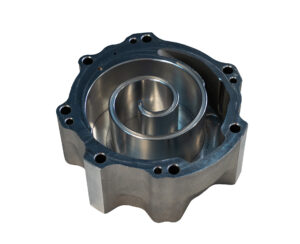
Today’s engine parts need to be finished to precise standards to ensure their function, efficiency, and longevity. Many of these parts have intricate internal surfaces and passages. Since traditional finishing methods are often not able to reach these interior areas, manufacturers use a process called extrude honing to get the job done.
Extrude honing works by hydraulically forcing a viscous, semi-solid abrasive media along the inner and outer surfaces of a workpiece. The abrasive media erodes burrs and other defects, smoothing and polishing away any rough spots. The extrude honing process allows for precise control over the amount of material removed, providing consistent results and ensuring that all parts are finished to the same quality standards.
Benefits of Extrude Honing for Finishing Inner Surfaces
The extrude honing process is especially effective at finishing parts with internal surfaces and features. It provides many advantages over other finishing techniques, including:
- The extrude honing method can reach and finish parts with complex and intricate internal shapes or contours. This can be challenging or even impossible to achieve using more traditional machining methods.
- The extrude honing processes provide a uniform material removal rate across the internal surface. This ensures consistency and eliminates the risk of uneven finishes.
- No cutting tools are used. Extrude honing uses abrasive particles that conform to the shape of the internal surface. The cutting tools used in traditional machining can produce uneven wear and have difficulty accessing certain internal features. Extrude honing eliminates the risk of tool marks or damage to the internal surfaces, allowing for more consistent finishing.
- By removing micro-level imperfections and irregularities extrude honing can achieve fine surface finishes on internal surfaces. This results in smoother and more polished inner and outer surfaces.
- Extrude honing improves fatigue resistance and longevity of components by removing burrs and radiussing edges.
- The extrude honing method allows for precise control over parameters such as pressure, flow rate, and abrasive media characteristics, enabling operators to tailor the process to achieve specific surface finish requirements.
- Extrude honing can be applied to a wide range of materials, including metals, ceramics, and composites. This versatility makes it suitable for finishing internal surfaces in various parts and components.
Results Depend on the Abrasive Media That is Used
How well the extrude honing process performs depends on the abrasive media compound used. There is no one-size-fits-all abrasive media. Different workpiece materials require different abrasive media to achieve the desired results. Some of the factors to consider when formulating and mixing an abrasive honing media include:
- The abrasive material used
- Grain size and density
- The bonding/carrier medium
- Viscosity
- The hardness of the workpiece material
Extrude Honing Services in Pittsburgh, PA
Deburring & Finishing Technologies has been a leading provider of abrasive extrude hone media and extrude hone machining services to companies in the Pittsburgh, PA, area since 2009. Local manufacturers know they can depend on Deburring & Finishing Technologies’ custom-formulated abrasive flow media to deliver precise and consistent inner and outer surface finishing that is free of burrs and other surface imperfections.
Our team of engineers possesses the experience to ensure the success of any extrude honing job. You can get in touch with Deburring & Finishing Technologies through our website or call us at (412) 849-1522 to discuss your extrude honing needs and get a free quote.
